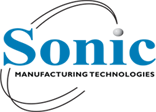
The Role of PCBs in Solar Power Systems
Solar power systems have become a mainstay of modern clean energy, enabling homeowners, businesses, and entire communities to reduce their carbon footprint while gaining energy independence. At the heart of these systems—managing everything from power conversion to safety protocols—are printed circuit boards (PCBs). Let’s explore why PCBs are crucial to solar technology, highlight common design considerations, and look at emerging trends in the field.
Understanding Solar Power Systems
A typical solar power setup consists of several key components:
- Solar Panels: Convert sunlight into direct current (DC) electricity.
- Charge Controller / Maximum Power Point Tracking (MPPT): Optimizes power flow and prevents battery overcharge or deep discharge in off-grid systems.
- Inverter: Converts DC from the panels (or battery) into alternating current (AC) for household or commercial use.
- Battery (Optional): Stores excess energy for later use, enabling off-grid or hybrid functionality.
- Load / Grid Tie: Powers appliances or feeds into the electric grid.
Beneath these major components lie a network of sensors, microcontrollers, power electronics, and communication modules—all of which rely on well-designed, robust PCBs.
Core Functions of PCBs in Solar Applications
Power Conversion and Regulation
From managing high-voltage DC from solar panels to inverting power to AC, PCBs house the complex circuits that handle power conversion. These circuits include transformers, transistors, and capacitors, all mounted on boards designed to withstand high current and significant heat dissipation.
Control and Monitoring
Modern solar installations use microcontrollers or digital signal processors (DSPs) to control power flow and track key performance metrics (voltage, current, temperature). Sensors are integrated into the PCB design to monitor real-time data, which helps the system operate at peak efficiency.
Communication Interfaces
Many solar systems now come with remote monitoring features, allowing users to check performance through apps or web dashboards. PCBs include communication interfaces such as Wi-Fi modules and Bluetooth. Proper PCB layout is critical for minimizing electromagnetic interference and ensuring reliable data transmission.
Protection and Safety Mechanisms
PCB-based safety features—like overcurrent protection, lightning arrestors, and over-temperature shutoffs—are vital for preventing catastrophic failures. Properly placed fuses, circuit breakers, and surge protection components on the PCB help safeguard both the user and the equipment.
Design Considerations for Solar-Related PCBs
High Voltage and Current Handling
Solar panels can produce high voltages (especially in larger arrays), and batteries can supply large currents. Designers must select copper weights, via placements, and trace widths that safely and efficiently handle these loads without causing voltage drops or risking overheating.
Thermal Management
As solar power electronics often operate in hot, sun-drenched conditions, effective heat dissipation is critical. Strategies include heat sinks to manage component temperatures, metal core PCBs for better heat conduction, and thermal vias to conduct heat away from sensitive components.
Weather and Environment Resistance
Solar installations may be exposed to moisture, dust, and extreme temperatures. PCB designs often incorporate conformal coatings or specialized laminates to protect circuits from corrosion and short-circuit risks. Outdoor enclosures further shield electronics from UV radiation and weather extremes.
Reliability and Durability
In many installations, maintenance access is limited—particularly for solar arrays on rooftops or in remote areas. This raises the stakes for long-term PCB reliability. Components must be rated for extended lifespans, and design margins must account for voltage spikes, temperature swings, and other environmental stresses.
Regulatory Compliance
Countries and regions enforce safety and performance standards for power electronics. Ensuring compliance involves careful selection of flame-retardant PCB materials (FR4, for instance) and adhering to guidelines on clearance, creepage distances, and hazardous substances.
Conclusion
As solar energy continues its rapid adoption worldwide, the printed circuit board stands out as an unsung hero—quietly orchestrating power conversion, safety measures, and communications in the background. From small residential systems to sprawling solar farms, the design and reliability of PCBs directly impact performance, efficiency, and overall user satisfaction. To discuss your PCB project for clean and renewable technology, contact Sonic Manufacturing Technologies today.
